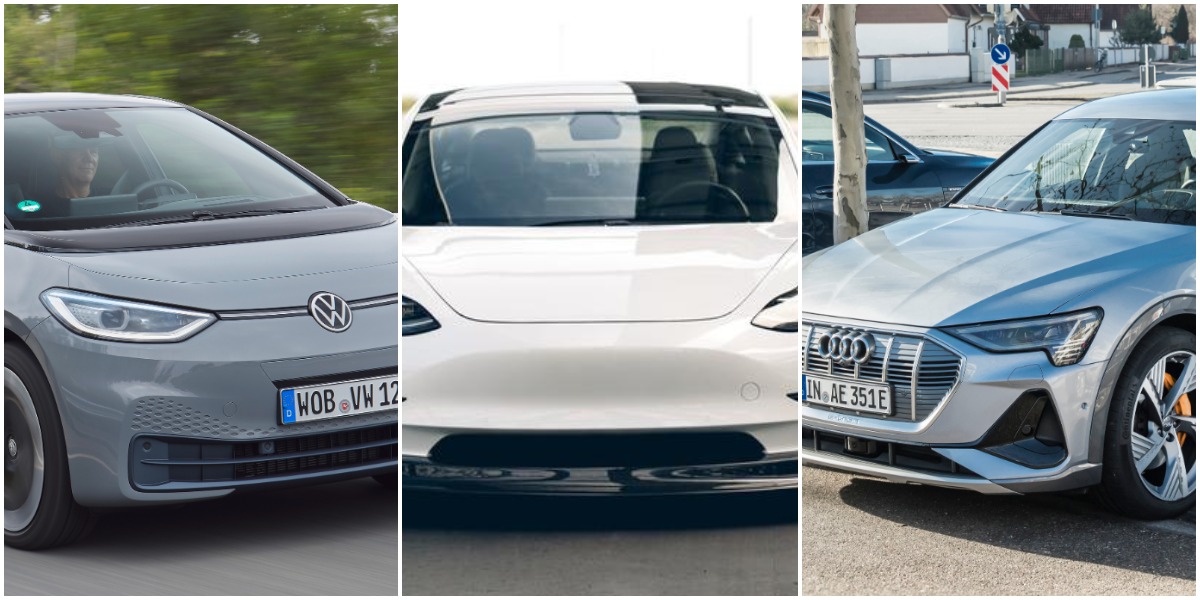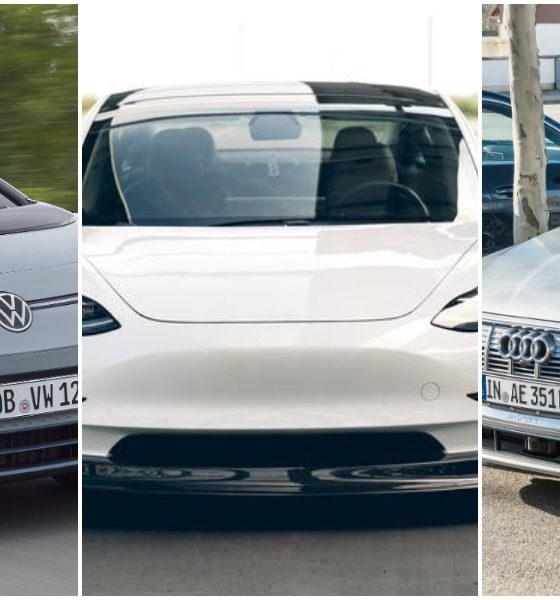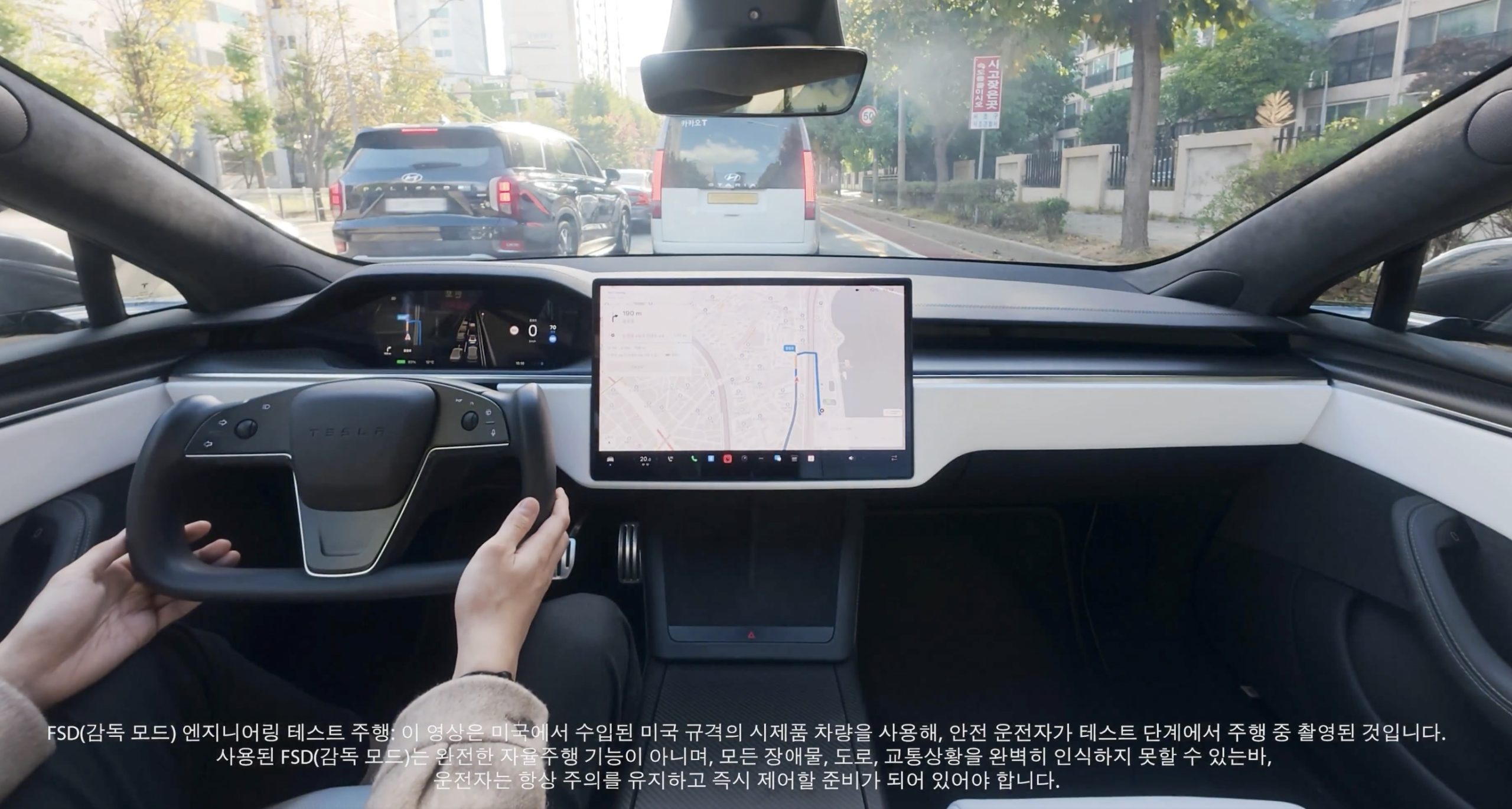

News
Tesla is willing to help other automakers, but ask nicely
Earlier this week, I wrote an article talking about the German car companies and their obsession with mentioning Tesla. Volkswagen, Audi, and BMW are all gunning for Tesla in terms of electric vehicle technology and manufacturing. While the three German giants admit that Tesla holds a multi-year lead in the EV sector, they all believe they can catch up to Elon Musk and the rest of the crew.
After publishing the article, Elon responded and said that Tesla was willing to help companies transition to sustainable forms of transportation because it would help the world as a whole. However, there is evidence to suggest that Tesla and Elon are going to help those who ask for it, not those who attempt to take information in a manner that could be considered “sneaky.”
Tesla is open to licensing software and supplying powertrains & batteries. We’re just trying to accelerate sustainable energy, not crush competitors!
— Elon Musk (@elonmusk) July 29, 2020
Additionally, one of Musk’s followers had asked if Tesla’s Autopilot could be shared with other automakers in an attempt to not only accelerate the charge towards semi and fully-autonomous driving. Musk simply replied, “Sure,” indicating that there did not seem to be any boundaries in terms of what Tesla would be willing to share with its “competitors” as capitalism would refer to them as.
Sure
— Elon Musk (@elonmusk) July 29, 2020
To me, I found that simple “Sure” reply as one of the most interesting Tweets of Musk’s illustrious Twitter career. Not only has the CEO provided many of my friends and me with a fair share of laughs and me because of his great sense of humor, but his digs at other companies, as well as some of the more ironic things that he has said, have always intrigued me.
When he said, “Sure,” all I thought of was the lawsuit that Tesla currently holds against an Xpeng engineer who formerly worked for Tesla.
For those of you that are not familiar, Tesla sued Xpeng engineer Cao Guangzhi earlier this year, who used to work for Tesla.
Guangzhi allegedly stole pieces of Tesla’s Autopilot source code and attempted to sell it to Xpeng for financial gain. Guangzhi had downloaded portions of the code to his personal laptop and then shared it through Apple Airdrop, which is hard to track because of the encryption that Apple uses. However, he ensures that he removed it from his personal laptop before leaving Tesla to join Xpeng.
This is a preview from our weekly newsletter. Each week I go ‘Beyond the News’ and handcraft a special edition that includes my thoughts on the biggest stories, why it matters, and how it could impact the future.
A big thanks to our long-time supporters and new subscribers! Thank you.
The case is still ongoing.
But what I found most interesting about Musk’s simple one-word answer was the fact that he stated he would be willing to share Autopilot’s developments with other automakers. But it seems it needs to be done in good and harmless fashion, and not in a sneaky way. This is entirely understandable, in my opinion.
If Guangzhi did what Tesla is accusing him of doing, it would be seriously sneaky and flawed. Tesla is the leader in semi-autonomous driving thanks to the developments of its Artificial Intelligence team, led by Andrej Karpathy. What separates Tesla from every other company in self-driving is the fact that it is continuously improving thanks to the company’s Neural Network. As information is communicated to the Neural Network with every Tesla vehicle on the road, the company’s self-driving software becomes more sophisticated and more accurate as it can predict the next movements of the drivers around a car.
If this source code were to be leaked or given to another company, it could be detrimental to Tesla’s lead in the self-driving universe. I’m excited to see how the case plays out.
More recently, Tesla sued Rivian for poaching former employees and stealing trade secrets. Interestingly enough, I had some time to read over several pages of the complaint from Tesla to Rivian, and some employees openly admitted to taking confidential documents when they left Tesla.
I am a big Rivian fan. I think R.J. Scaringe, the company’s CEO, is a brilliant person who has a lot of potential to do amazing things. I have recommended to a couple of my friends that they should invest in an R1T instead of getting a Cybertruck because they don’t like the Tesla pickup’s design. But either way, it seems from my understanding of legal documentation, it is going to be up to Tesla to prove that Rivian asked these employees to take things and that they are openly going after past Tesla employees. I think that is going to be a tough cookie to crack.
But either way, Rivian didn’t go to Tesla for help directly. I feel that if they needed help with electrification or self-driving code, they should have reached out to Elon directly.
Elon has stated for years that the biggest enemy of Tesla is not competitors who are developing sustainable electric vehicles. The companies that are the biggest threat to Tesla are the biggest threat to us all, which are the ones who refuse to adapt to the sustainable transportation revolution. Companies that want to develop and improve internal combustion engine machines are a threat. Not financially, but environmentally, because they’re ignoring the apparent crisis that is going on in the world.
Does it seem like Elon wouldn’t be willing to help other automakers develop their vehicles if they asked for help? I don’t think so. Personally, when I look at Musk’s mission, I see a man who is interested in collaborating with anyone and everyone, as long as they are willing to admit that their push toward sustainability is the focus and not on the backburner.
Please consider Subscribing and joining me next week as I go ‘Beyond the News’

News
Tesla Full Self-Driving lands in a new country, its 7th

Tesla Full Self-Driving has officially landed in a new country today, its seventh overall after it launched in both Australia and New Zealand earlier this year.
On Sunday, Tesla owners in South Korea reported that the company’s Full Self-Driving (Supervised) had started arriving in their vehicles. Owners reported that it was v14.1.4, which is not the latest version available in other countries, but is one of the most recent releases Tesla has deployed to drivers:
From 6 to 7
Tesla Full Self-Driving has launched in South Korea; the 7th country to have FSD https://t.co/X6gm1SyoxV
— TESLARATI (@Teslarati) November 23, 2025
This marks the seventh country in which Tesla has enabled its Full Self-Driving suite, following the United States and Puerto Rico, Canada, China, Mexico, Australia, and New Zealand.
Tesla launched Full Self-Driving most recently in Australia and New Zealand about three months ago. The expansion is a major breakthrough for the company as it aims to launch Full Self-Driving on a global scale.
However, the company’s biggest challenge thus far has been getting European regulatory agencies to handle the red tape that has inhibited Tesla from launching its semi-autonomous driving suite on the continent. Recently, it admitted that it sees a pathway through Dutch regulatory bodies, which seem to be the most willing to work with Tesla to get FSD in Europe.
Tesla Full Self-Driving appears to be heading to Europe soon
The company said that it has driven over 1 million kilometers safely on European roads across 17 different countries in internal testing. But its path to success will be by “partnering with the Dutch approval authority RDW to gain exemption for the feature. This involves proving compliance with existing regulations (UN-R-171 DCAS) + filing an exemption (EU Article 39) for yet-to-be-regulated behaviors like Level 2 systems off-highway, system-initiated lane changes with hands-off the wheel, etc.”
Perhaps the expansion into Europe will be the biggest challenge for Tesla, but it could also yield major results and advantages for the company moving forward. Tesla said it hopes to have FSD available in Europe sometime early next year.
For now, the expansion in South Korea is the latest win for Tesla and its self-driving efforts. In the U.S., it now turns its focus toward fully autonomous operation, as it works with state agencies to launch Robotaxi outside of Texas, California, and most recently, Arizona.
Elon Musk
Tesla CEO Elon Musk teases insane capabilities of next major FSD update

Tesla CEO Elon Musk teased the insane capabilities of the next major Full Self-Driving update just hours after the company rolled out version 14.2 to owners.
Tesla Full Self-Driving v14.2 had some major improvements from the previous iteration of v14.1.x. We were on v14.1.7, the most advanced configuration of the v14.1 family, before Tesla transitioned us and others to v14.2.
However, Musk has said that the improvements coming in the next major update, which will be v14.3, will be where “the last big piece of the puzzle finally lands.”
14.3 is where the last big piece of the puzzle finally lands
— Elon Musk (@elonmusk) November 21, 2025
There were some major improvements with v14.2, most notably, Tesla seemed to narrow in on the triggers that caused issues with hesitation and brake stabbing in v14.1.x.
One of the most discussed issues with the past rollout was that of brake stabbing, where the vehicle would contemplate proceeding with a route as traffic was coming from other directions.
We experienced it most frequently at intersections, especially four-way stop signs.
Elon Musk hints at when Tesla can fix this FSD complaint with v14
In our review of it yesterday, it was evident that this issue had been resolved, at least to the extent that we had no issues with it in a 62-minute drive, which you can watch here.
Some owners also reported a more relaxed driver monitoring system, which is something Tesla said it was working on as it hopes to allow drivers to text during operation in the coming months. We did not test this, as laws in Pennsylvania prohibit the use of phones at any time due to the new Paul Miller’s Law, which took effect earlier this year.
However, the improvements indicate that Tesla is certainly headed toward a much more sentient FSD experience, so much so that Musk’s language seems to be more indicative of a more relaxed experience in terms of overall supervision from the driver, especially with v14.3.
Musk did not release or discuss a definitive timeline for the release of v14.3, especially as v14.2 just rolled out to Early Access Program (EAP) members yesterday. However, v14.1 rolled out to Tesla owners just a few weeks ago in late 2025. There is the potential that v14.3 could be part of the coming Holiday Update, or potentially in a release of its own before the New Year.
News
Tesla Full Self-Driving v14.2 – Full Review, the Good and the Bad

Tesla rolled out Full Self-Driving version 14.2 yesterday to members of the Early Access Program (EAP). Expectations were high, and Tesla surely delivered.
With the rollout of Tesla FSD v14.2, there were major benchmarks for improvement from the v14.1 suite, which spanned across seven improvements. Our final experience with v14.1 was with v14.1.7, and to be honest, things were good, but it felt like there were a handful of regressions from previous iterations.
While there were improvements in brake stabbing and hesitation, we did experience a few small interventions related to navigation and just overall performance. It was nothing major; there were no critical takeovers that required any major publicity, as they were more or less subjective things that I was not particularly comfortable with. Other drivers might have been more relaxed.
With v14.2 hitting our cars yesterday, there were a handful of things we truly noticed in terms of improvement, most notably the lack of brake stabbing and hesitation, a major complaint with v14.1.x.
However, in a 62-minute drive that was fully recorded, there were a lot of positives, and only one true complaint, which was something we haven’t had issues with in the past.
The Good
Lack of Brake Stabbing and Hesitation
Perhaps the most notable and publicized issue with v14.1.x was the presence of brake stabbing and hesitation. Arriving at intersections was particularly nerve-racking on the previous version simply because of this. At four-way stops, the car would not be assertive enough to take its turn, especially when other vehicles at the same intersection would inch forward or start to move.
This was a major problem.
However, there were no instances of this yesterday on our lengthy drive. It was much more assertive when arriving at these types of scenarios, but was also more patient when FSD knew it was not the car’s turn to proceed.
Can report on v14.2 today there were ZERO instances of break stabbing or hesitation at intersections today
It was a significant improvement from v14.1.x
— TESLARATI (@Teslarati) November 21, 2025
This improvement was the most noticeable throughout the drive, along with fixes in overall smoothness.
Speed Profiles Seem to Be More Reasonable
There were a handful of FSD v14 users who felt as if the loss of a Max Speed setting was a negative. However, these complaints will, in our opinion, begin to subside, especially as things have seemed to be refined quite nicely with v14.2.
Freeway driving is where this is especially noticeable. If it’s traveling too slow, just switch to a faster profile. If it’s too fast, switch to a slower profile. However, the speeds seem to be much more defined with each Speed Profile, which is something that I really find to be a huge advantage. Previously, you could tell the difference in speeds, but not in driving styles. At times, Standard felt a lot like Hurry. Now, you can clearly tell the difference between the two.
It seems as if Tesla made a goal that drivers should be able to tell which Speed Profile is active if it was not shown on the screen. With v14.1.x, this was not necessarily something that could be done. With v14.2, if someone tested me on which Speed Profile was being used, I’m fairly certain I could pick each one.
Better Overall Operation
I felt, at times, especially with v14.1.7, there were some jerky movements. Nothing that was super alarming, but there were times when things just felt a little more finicky than others.
v14.2 feels much smoother overall, with really great decision-making, lane changes that feel second nature, and a great speed of travel. It was a very comfortable ride.
The Bad
Parking
It feels as if there was a slight regression in parking quality, as both times v14.2 pulled into parking spots, I would have felt compelled to adjust manually if I were staying at my destinations. For the sake of testing, at my first destination, I arrived, allowed the car to park, and then left. At the tail-end of testing, I walked inside the store that FSD v14.2 drove me to, so I had to adjust the parking manually.
This was pretty disappointing. Apart from parking at Superchargers, which is always flawless, parking performance is something that needs some attention. The release notes for v14.2. state that parking spot selection and parking quality will improve with future versions.
Any issues with parking on your end? 14.1.7 didn’t have this trouble with parking pic.twitter.com/JPLRO2obUj
— TESLARATI (@Teslarati) November 21, 2025
However, this was truly my only complaint about v14.2.
You can check out our full 62-minute ride-along below:








